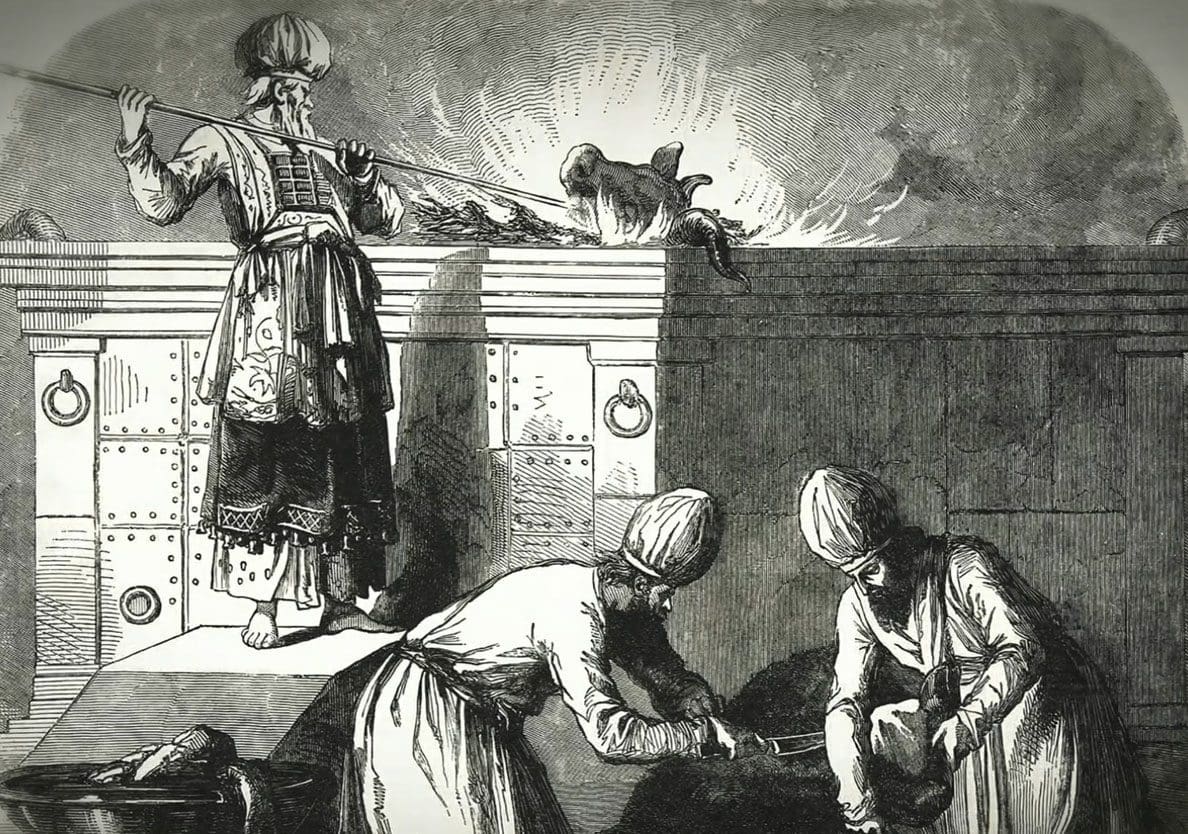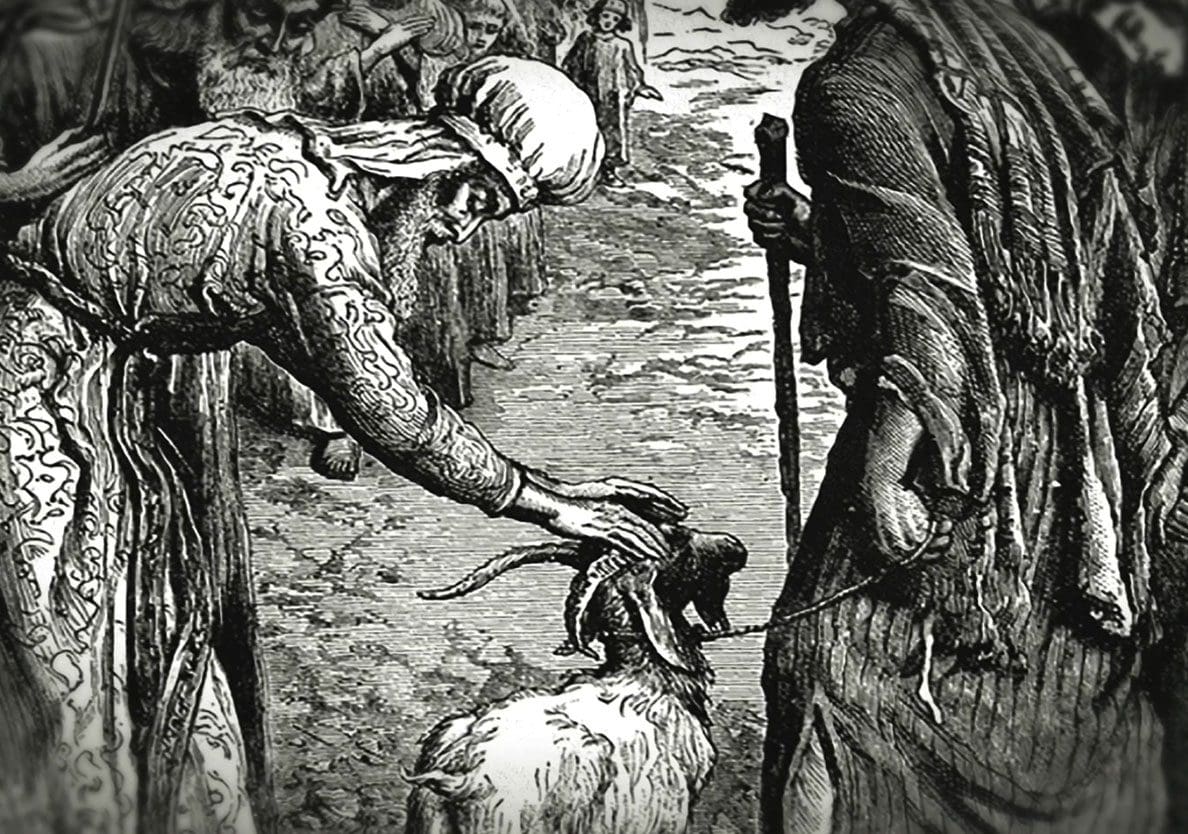One of the most important and critical elements in Christian theology is atonement. Atonement refers to the covering over or removal of sin for the purpose of reconciling sinful human beings with a holy and righteous God (a God Who cannot tolerate sin) and interestingly, “More than half of the occurrences of the word atonement in Scripture are found in Leviticus 16, which describes the most important day on the Hebrew calendar,” Yom Kippur (the Day of Atonement). “This annual holy day celebrated the covering of national sins by the offering of two goats to God, one killed and the other driven into the wilderness.”[1] Indeed, once the sacrificial goat had been offered, the high priest laid his hands on the head of the live goat and confessed over him the sins of the people. The goat was then sent away into the wilderness, bearing away with it the sins of the people.[2]
That both of these goats anticipated and typified Jesus Christ’s later Passion is not a subject of debate among true Christian scholarship. In fact, it was the renowned Old Testament scholar Gleason Archer who boldly declared that “each sacrificial animal referred to in the Mosaic Law symbolized some aspect of Christ’s atoning work.”[3] On this point virtually all Christian scholars agree.
“Our Jewish friends still observe the Day of Atonement every year…. What our Jewish friends need to know is that the day the Lord Jesus Christ died at Calvary, He fulfilled the Day of Atonement.”
Jerry Vines
However, where not all agree is in regard to the goat which the King James and New International versions of the Bible call the ‘scapegoat.’ The Hebrew word is Azazel but there is uncertainty regarding its meaning. As a result, various explanations have been put forth. Traditional expositors believe that Azazel should be taken as a proper name of the goat itself meaning “the goat that departs” (from ʿēz H6436 and ʾāzal H261), hence the conventional rendering of scapegoat (or escape-goat in our modern vernacular). However, some scholars believe this interpretation is incorrect since the goat was released to or for Azazel (Leviticus 16:8). Another interpretation, which is the common rabbinic view, says that Azazel referred not to the goat but instead “designated the area to which the goat was released as a rugged or desolate place.”[4] And yet a third interpretation suggests that “The name is derived from a Semitic root ʿzl (“to remove” in Arabic) and refers to the “entire removal” of sin.”[5] Yet, there are several scholars who reject all of the above interpretations because of the parallelism of Leviticus 16:8 which, they say, demands a personal name to be in opposition to “the LORD”. The verse reads: “Then Aaron shall cast lots for the two goats: one lot for the LORD and the other lot for Azazel.” But if Azazel is a personal name then who does it refer to? These scholars (some of whom derive the name from ʿāzaz H6451+ ʾēl H446, “fierce god”) connect Azazel with some sort of a desert demon. In particular “the leader of the evil spirits of the wilderness” (Deuteronomy 32:17; Psalms 106:37;2 Chronicles 11:15).[6]
Further support for this identification is found in the apocryphal book of 1 Enoch where Azazel is the head of the rebel angels.


Of course, this latter interpretation is not without challenges either. For example, some scholars believe that “The tradition that the scapegoat was a name for a desert demon was of much later origin”[7] and point out that the Greek translators of the Septuagint also did not accept Azazel as a personal name. This interpretation also troubles many scholars because the Scriptures clearly forbid making sacrifices to demons (Leviticus 17:7). On the other hand, one scholar in support of the desert demon view points out that there is no hint of this goat being a sacrifice. “This goat is not ritually slain, there are no rites with its blood, and it is not burned on an altar. Rather, it carries the sins of the congregation to Azazel and leaves them at their source. This ritual has atoning merit, for by returning sins to their source, the power of these sins over the congregation is completely broken.”[8]
Despite which interpretation is correct, one thing is certain: Jesus Christ ultimately fulfilled the Day of Atonement some 2,000 years ago. As Bible scholar Jerry Vines so elegantly put it, “Our Jewish friends still observe the Day of Atonement every year. Today they have no temple, no priest, and no lamb. What our Jewish friends need to know is that the day the Lord Jesus Christ died at Calvary, He fulfilled the Day of Atonement. When Jesus said, “It is finished,” our sins weren’t just covered—our sins were put away forever.”[9]

Ryan Hembree is a daily co-host, speaker, and writer of Bible Discovery. He also hosts a YouTube channel that shows the unity of the Bible and how science and Scripture fit together. Ryan also has an honorary Masters of Ministry in Creation Science from Phoenix University of Theology.
[1] King James Study Bible, Day of Atonement (16:30).
[2] Halley’s Bible Handbook, The Annual Day of Atonement.
[3] Gleason Archer, New International Encyclopedia of Bible Difficulties, Who is the scapegoat of Leviticus 16? Or what does it represent?
[4] Zondervan Illustrated Bible Dictionary, Scapegoat.
[5] Ibid.
[6] Ibid.
[7] Ibid.
[8] Asbury Bible Commentary, Selection of the Goats (16:6-10).
[9] Jerry Vines, Vines Expository Bible Notes, Day of Atonement (Lev. 16).






